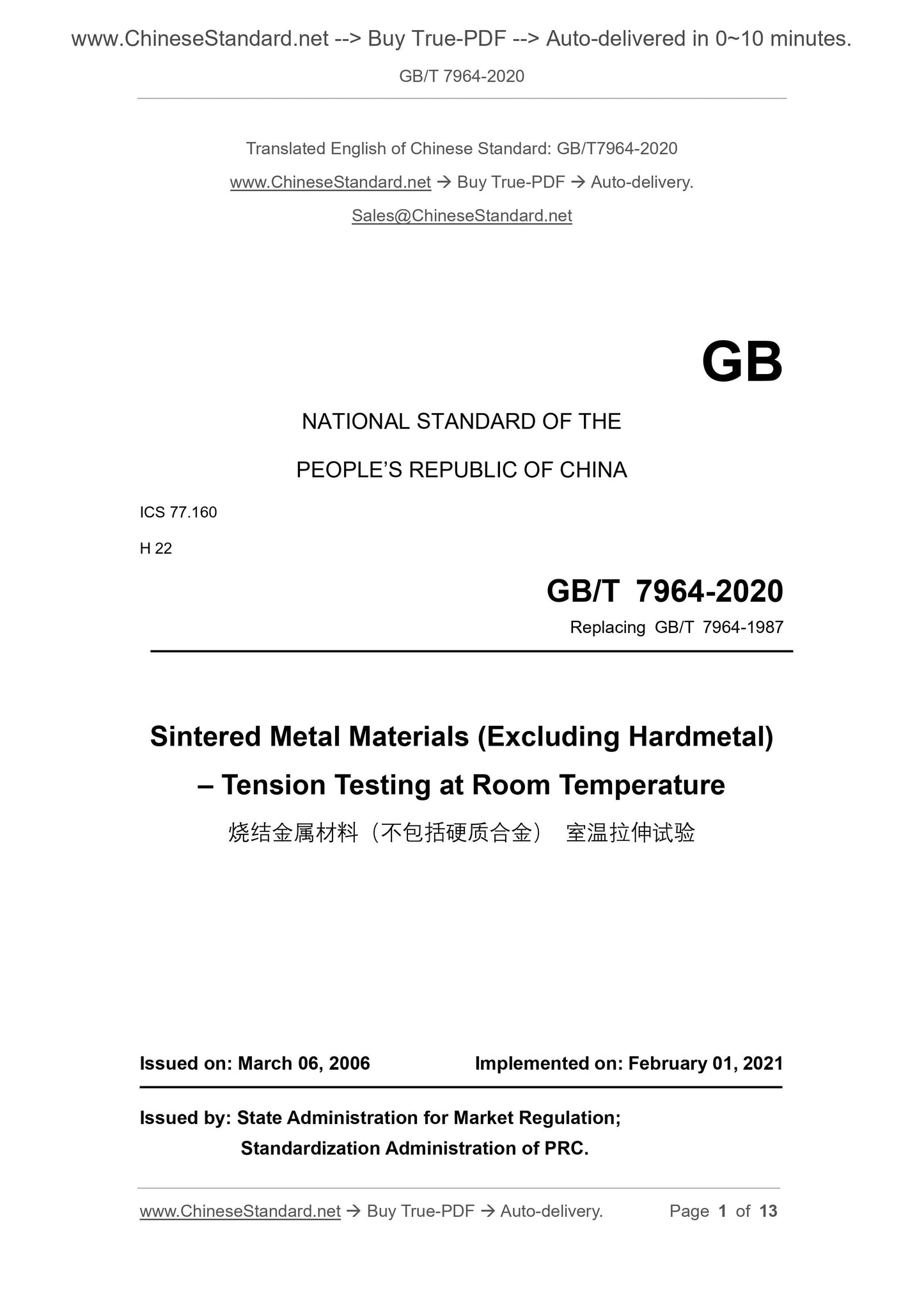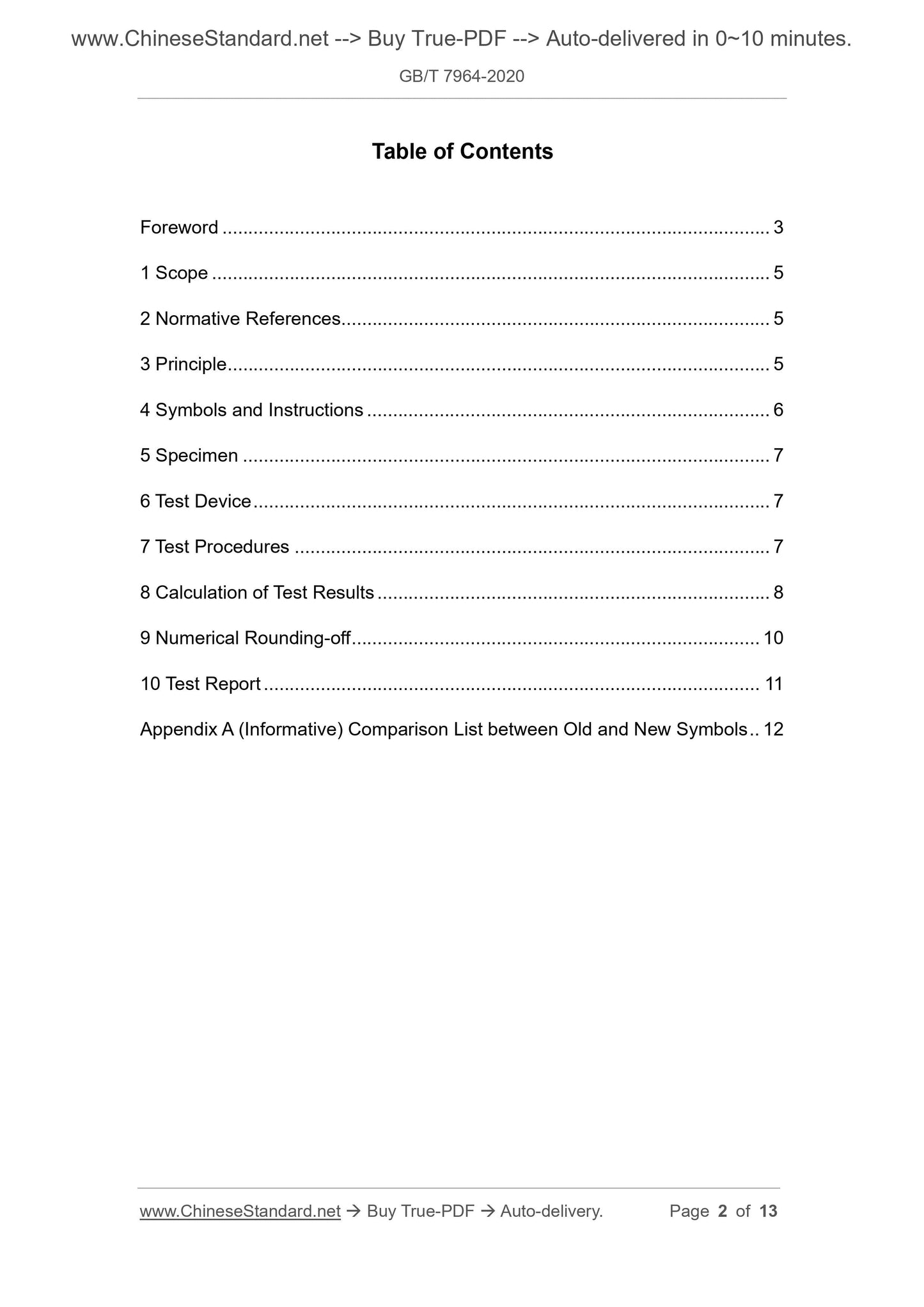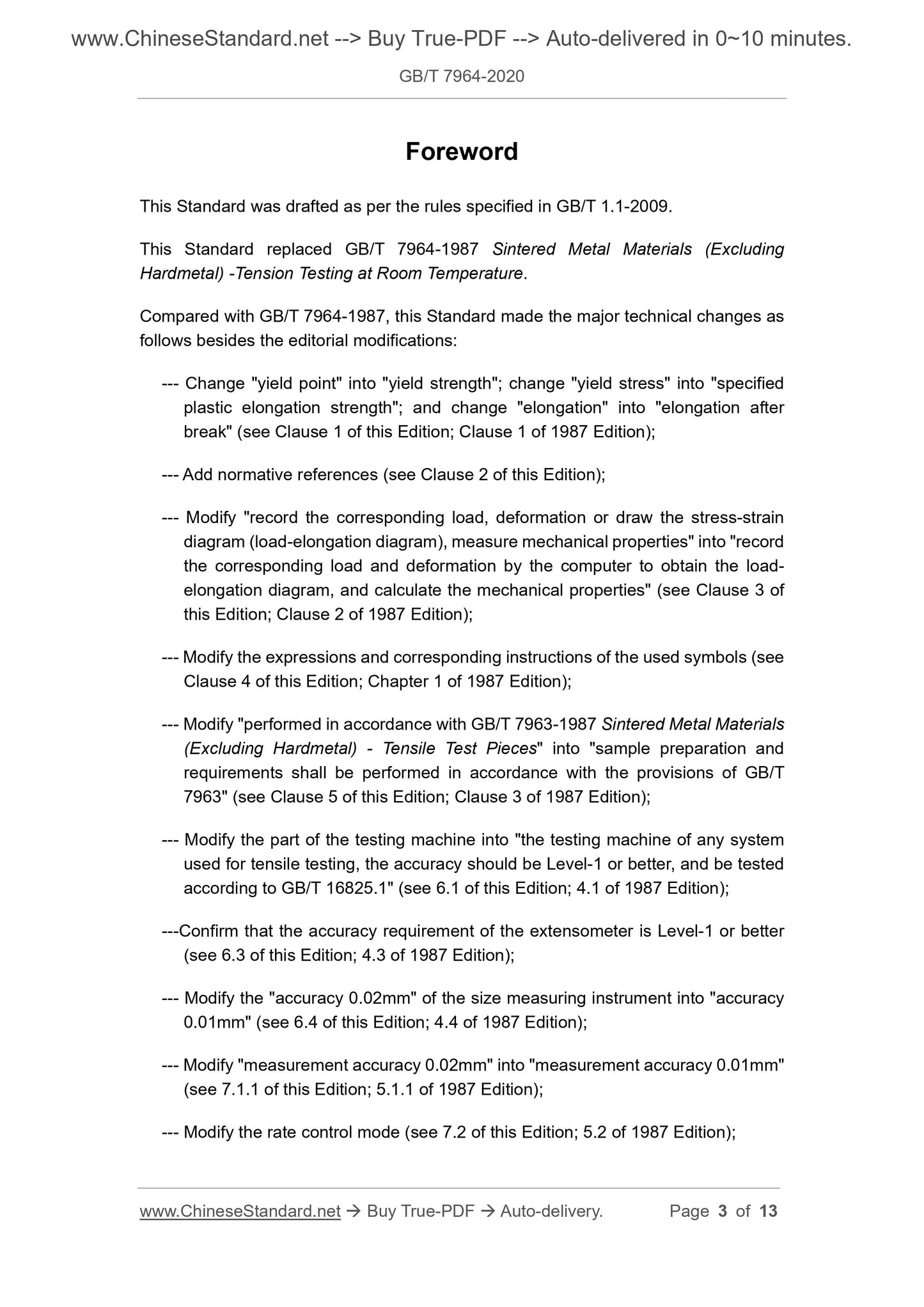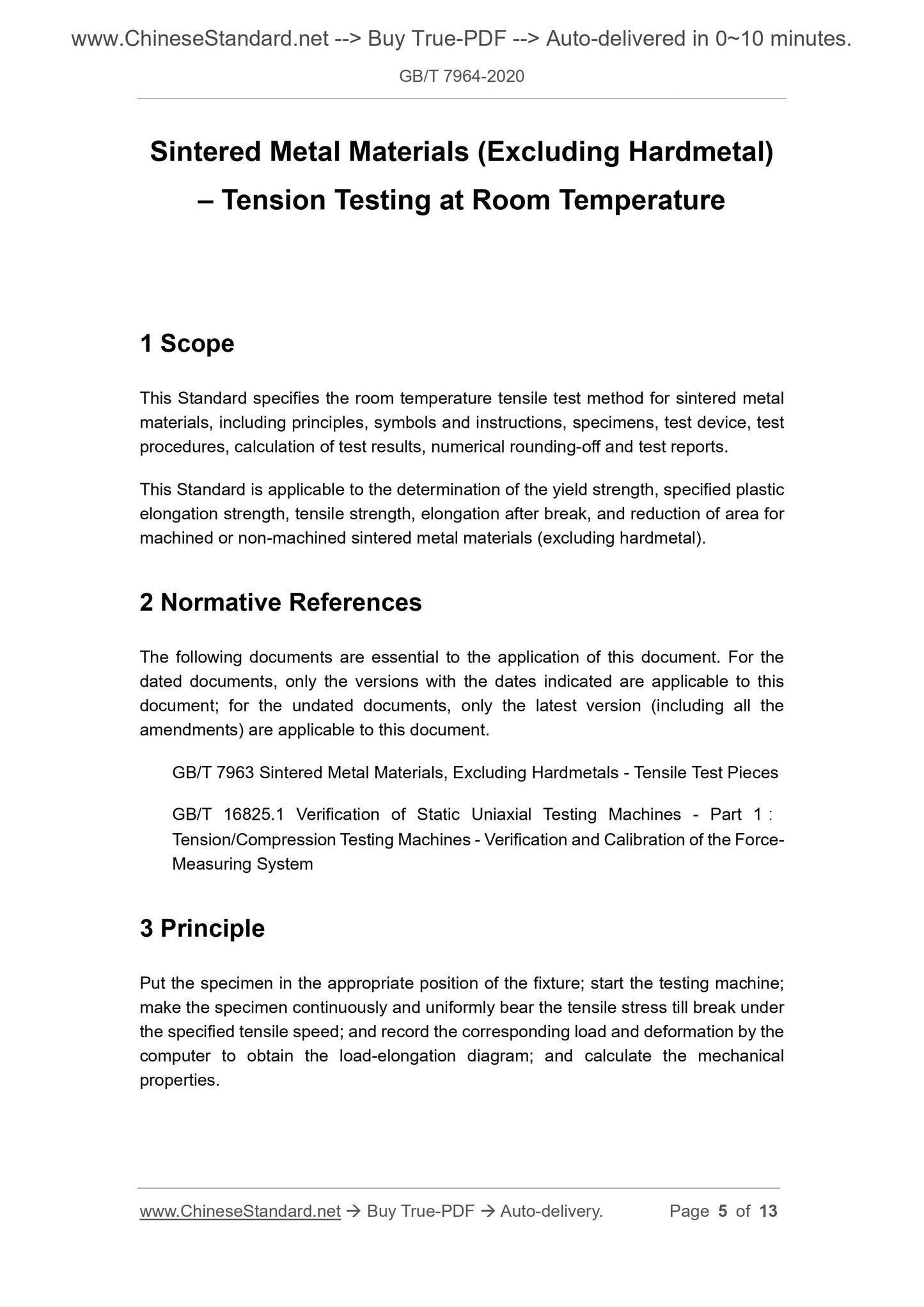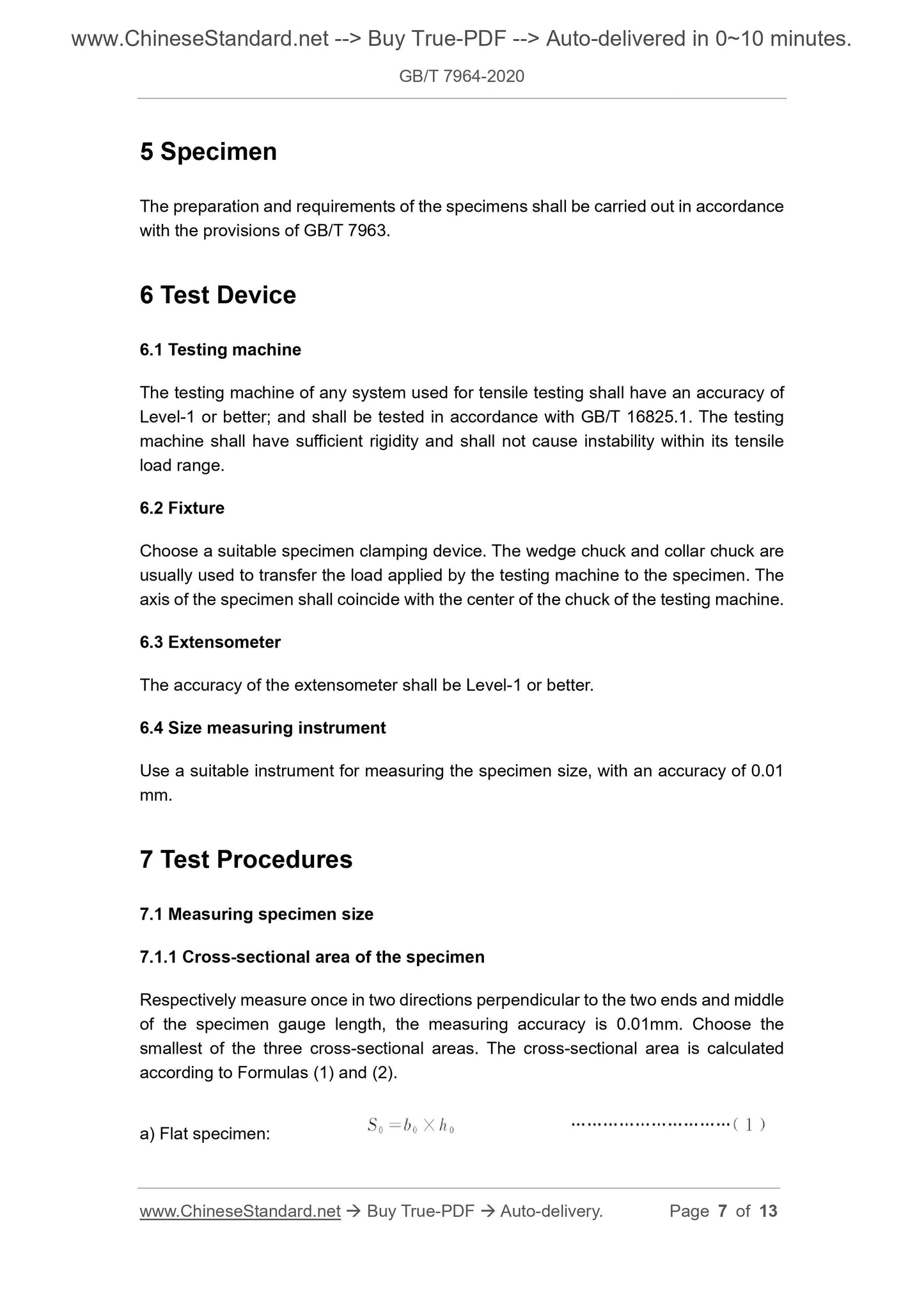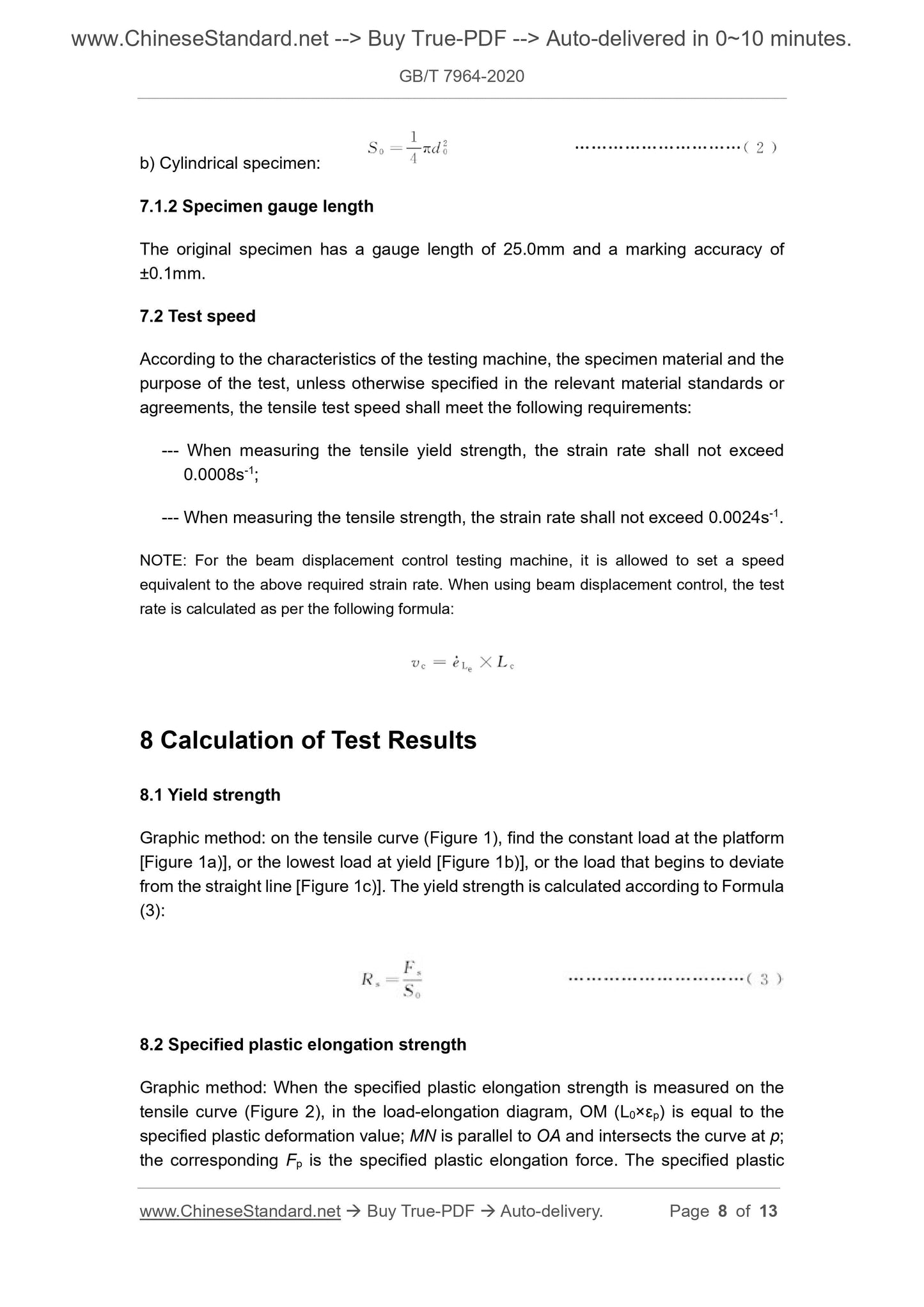1
/
of
6
www.ChineseStandard.us -- Field Test Asia Pte. Ltd.
GB/T 7964-2020 English PDF (GB/T7964-2020)
GB/T 7964-2020 English PDF (GB/T7964-2020)
Regular price
$145.00
Regular price
Sale price
$145.00
Unit price
/
per
Shipping calculated at checkout.
Couldn't load pickup availability
GB/T 7964-2020: Sintered Metal Materials (Excluding Hardmetal) - Tension Testing at Room Temperature
Delivery: 9 seconds. Download (and Email) true-PDF + Invoice.Get Quotation: Click GB/T 7964-2020 (Self-service in 1-minute)
Newer / historical versions: GB/T 7964-2020
Preview True-PDF
Scope
This Standard specifies the room temperature tensile test method for sintered metalmaterials, including principles, symbols and instructions, specimens, test device, test
procedures, calculation of test results, numerical rounding-off and test reports.
This Standard is applicable to the determination of the yield strength, specified plastic
elongation strength, tensile strength, elongation after break, and reduction of area for
machined or non-machined sintered metal materials (excluding hardmetal).
Basic Data
| Standard ID | GB/T 7964-2020 (GB/T7964-2020) |
| Description (Translated English) | Sintered Metal Materials (Excluding Hardmetal) - Tension Testing at Room Temperature |
| Sector / Industry | National Standard (Recommended) |
| Classification of Chinese Standard | H22 |
| Classification of International Standard | 77.160 |
| Word Count Estimation | 10,155 |
| Date of Issue | 2020-03-06 |
| Date of Implementation | 2021-02-01 |
| Issuing agency(ies) | State Administration for Market Regulation, China National Standardization Administration |
Share
